Flavor-Packed Roasted Red Pepper Pasta with Capers
Savor a quick and delicious dinner with this Roasted Red Pepper Pasta with Capers! Utilizing jarred roasted red peppers, this recipe is not only simple but delivers a delightful punch of flavor that everyone will enjoy.
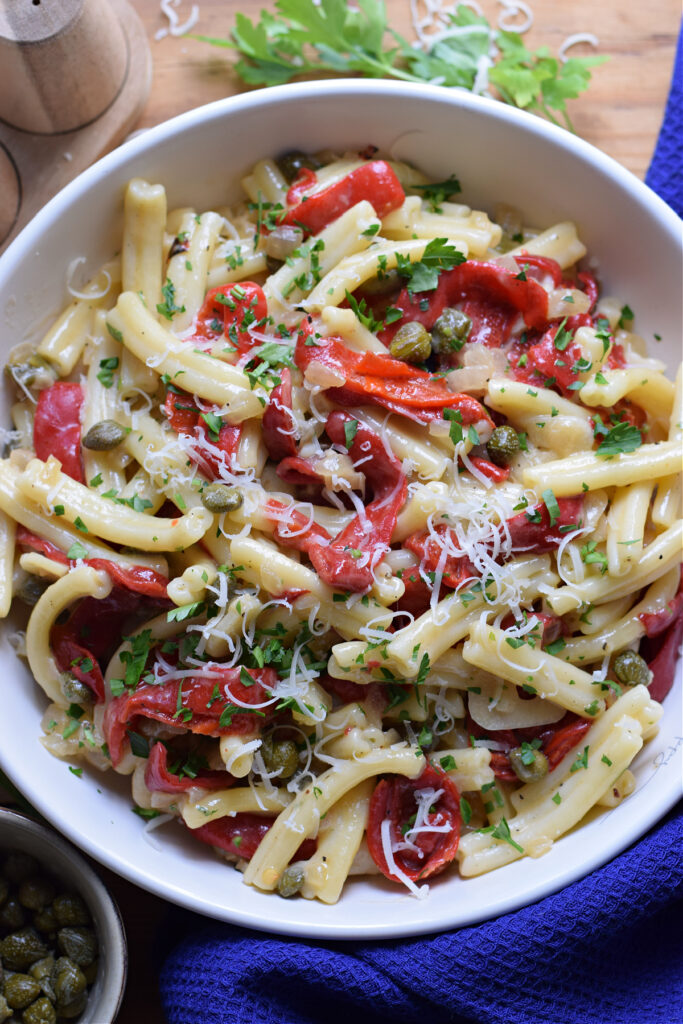
What to Expect from This Pasta Dish
- Difficulty: This dish is very easy to prepare, requiring just 10 minutes of prep time and a quick cook of under 20 minutes.
- Taste: Experience a fresh and tangy pasta dish that offers vibrant flavors without being creamy, thanks to the combination of capers and roasted red peppers.
- Serving: Perfect for a main course, this recipe serves 4. Adjust the serving size in the recipe card at the end as needed to fit your table!
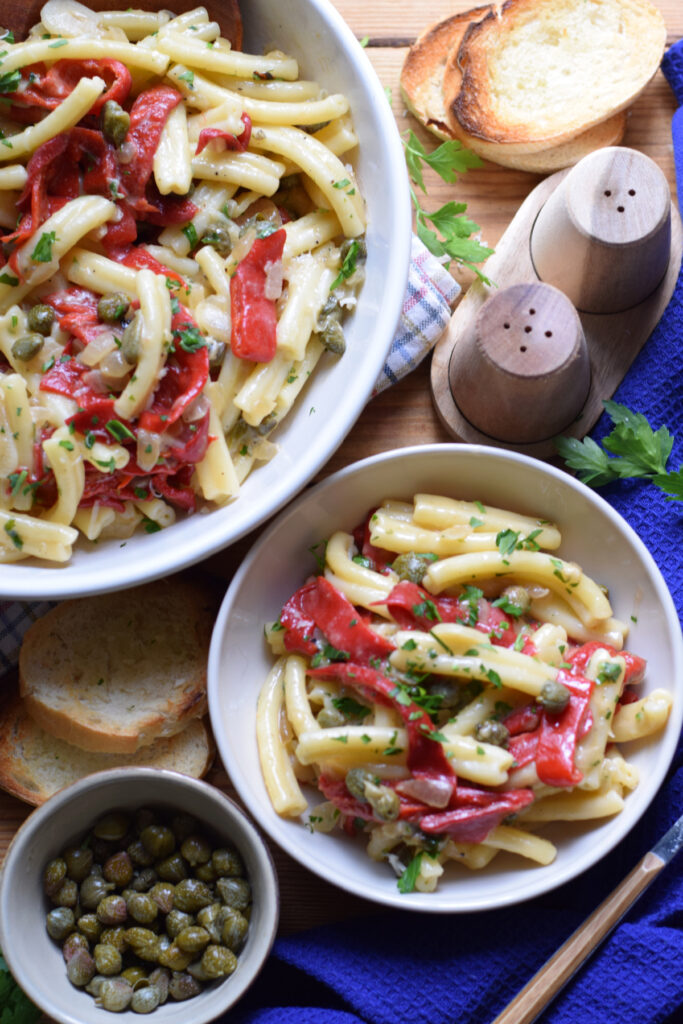
Ingredients
- Pasta: I used ziti, which is similar to penne—available at any supermarket.
- Olive Oil: Extra virgin olive oil makes a great choice for cooking.
- Onion: A small white onion, finely diced for a subtle sweetness.
- Garlic: Fresh garlic is essential—use 4 large cloves, peeled and thinly sliced.
- Butter: Unsalted butter is best; if using salted, skip adding extra salt to the dish.
- Capers: These add a tangy touch and can be found in jars alongside olives.
- Roasted Red Peppers: Jarred roasted red peppers streamline the cooking process.
- Pasta Water: Don’t forget to reserve some pasta water to help blend the dish together.
- Gruyere Cheese: A half cup provides creamy texture and flavor.
- Seasonings: Just salt and black pepper to taste.
- Herbs: A sprinkle of fresh chopped parsley enhances the dish.
Note: Full instructions are available at the end of the post in the recipe card.
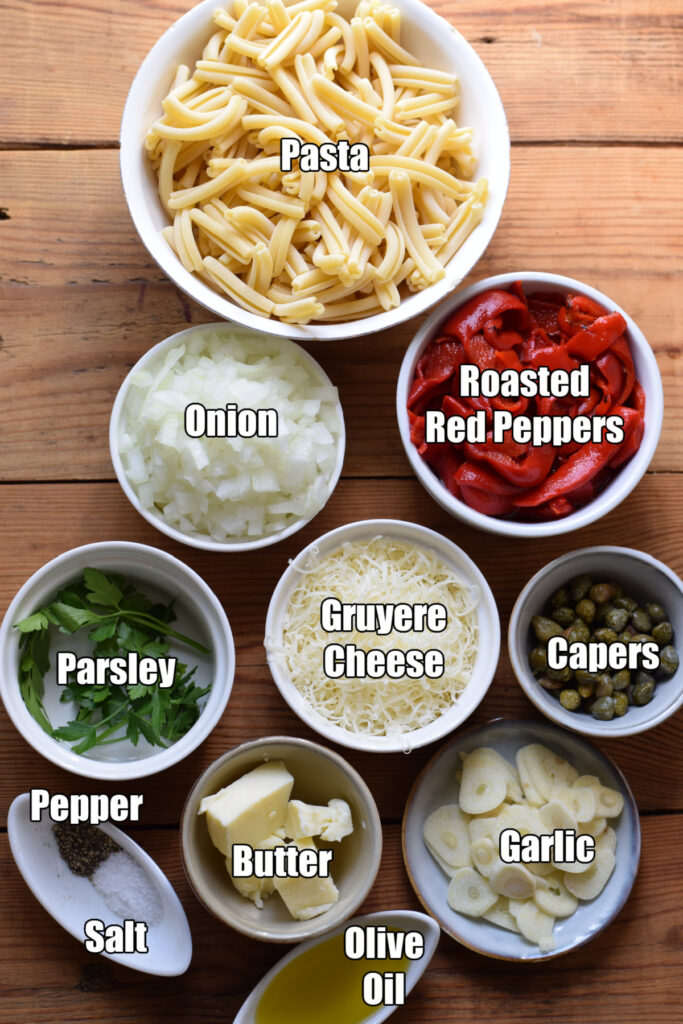
Instructions
- Cook Pasta: Boil the pasta according to the package directions. Make sure to save about ½ cup (120 ml) of the pasta water before draining.
- Sauté Onions and Garlic: Heat olive oil in a medium skillet over medium-high heat, add diced onions, and cook for about 8 minutes until soft. Add the garlic and stir for another 3 minutes until fragrant.
- Add Capers and Red Peppers: Melt 2 tablespoons of butter in the skillet until sizzling. Stir in the capers and roasted red peppers, cooking for about 1-2 minutes.
- Combine Everything: Put the drained pasta, reserved pasta water, cheese, remaining butter, salt, pepper, and parsley into the skillet and mix thoroughly.
- Garnish and Serve: Plate the pasta right away, adding more cheese and black pepper on top if you wish!

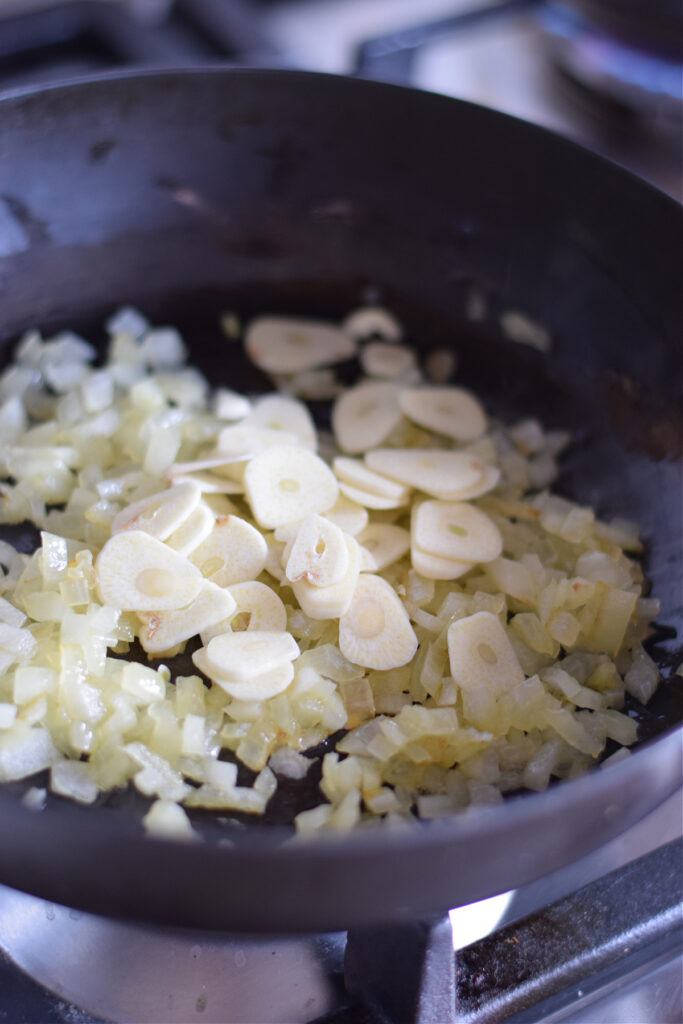
Recipe Tips
- Thin Garlic Slices: Ensure garlic is sliced thinly for even cooking, preventing large pieces from overwhelming the dish.
- Reserve Pasta Water: This helps achieve a silky texture, especially since the dish isn’t creamy.
- Time Management: Start cooking the onions while the pasta boils to ensure everything finishes simultaneously.
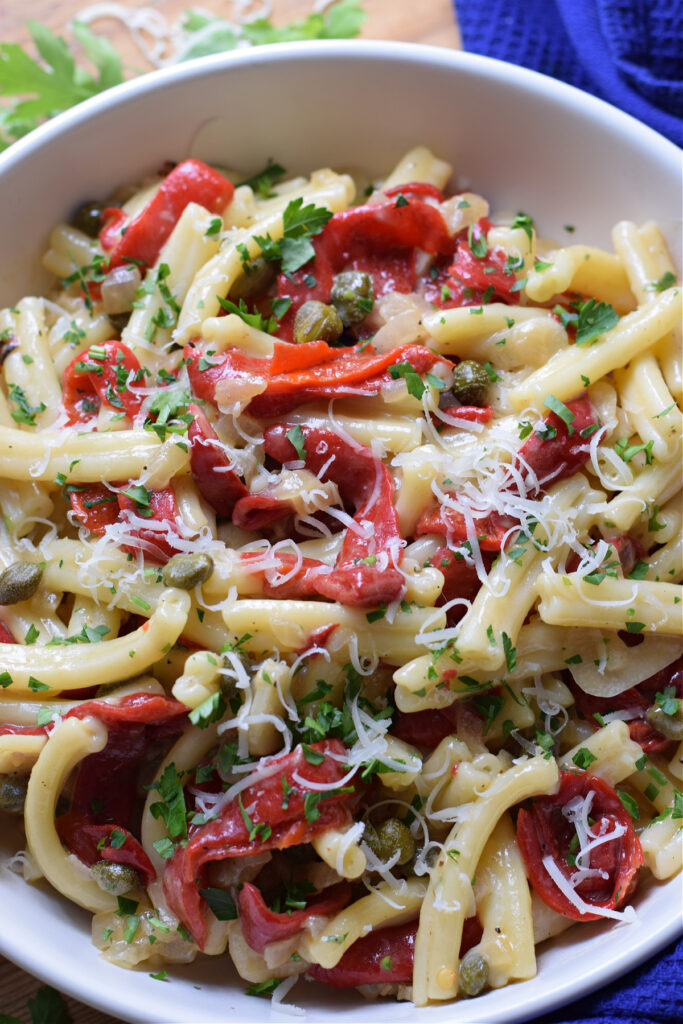
Substitutions
- Pasta: Ziti can be swapped with penne, pasta spirals, or rotini.
- Onions: Any variety works—brown onions, leeks, or shallots can be used.
- Gruyere Cheese: Substitute with parmesan for a similar flavor profile.
- Roasted Red Peppers: Feel free to roast fresh peppers if you prefer.

Serving Suggestions

Frequently Asked Questions
What do capers taste like?
Capers have a tangy flavor reminiscent of lemony green olives. Their briny taste adds an appealing twist to various dishes.
Are capers and olives similar?
While capers and olives share a similar taste profile and appearance, capers are much smaller and come from different plants—capers are from caper bushes, while olives grow on olive trees.
Can I make this dish vegetarian?
Yes! This pasta dish is inherently vegetarian-friendly, and it can easily be made vegan by omitting the butter and cheese or replacing them with plant-based alternatives.
What wines pair well with this pasta?
Pasta with roasted red peppers and capers pairs nicely with a light white wine like Sauvignon Blanc or a dry rosé.
How can I store leftovers?
Leftover pasta can be stored in an airtight container in the refrigerator for up to 3 days. Reheat gently in a skillet over medium heat, adding a splash of water if needed.
This HTML structure organizes the content neatly while adhering to the friendly language tone and enhanced SEO practices for a recipe article. Each section provides clear and helpful information that readers will appreciate as they navigate through the recipe.











